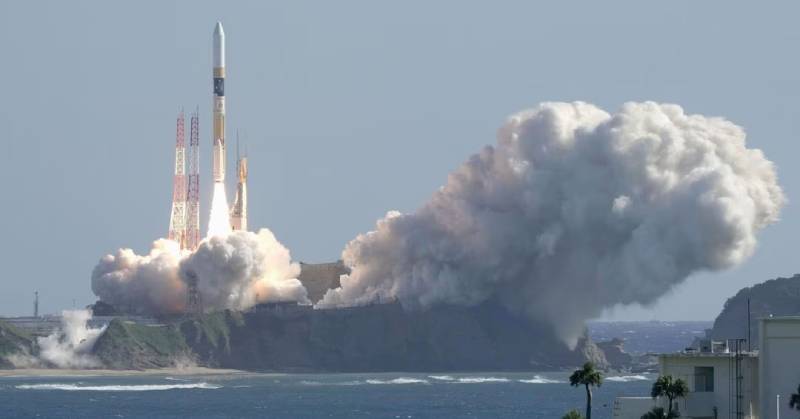Japan launched a lunar exploration spacecraft on a homegrown H-IIA rocket on Thursday in an effort to become the fifth nation in the world to set foot on the moon early in 2019.
According to the Japan Aerospace Exploration Agency (JAXA), the rocket successfully launched the Smart Lander for Investigating Moon (SLIM) from Tanegashima Space Centre in southern Japan. Last month, unfavourable weather caused three postponements in a row.
Japan’s “moon sniper” mission intends to land the SLIM spacecraft only 100 metres from its intended target area on the lunar surface. After a lengthy, fuel-efficient approach trajectory, the $100 million mission is anticipated to begin the landing by February.
“The big objective of SLIM is to prove the high-accuracy landing … to achieve ‘landing where we want’ on the lunar surface, rather than ‘landing where we can’,” JAXA President Hiroshi Yamakawa told a news conference.
On Thursday, JAXA said that it received signals from SLIM suggesting that it was functioning regularly hours after launch.
With its Chandrayaan-3 mission to the unexplored lunar south pole, India became the fourth country to safely land a spacecraft on the moon two weeks prior to the launch. The Russian Luna-25 lander crashed when it got close to the moon at about the same time.
In the past year, Japan’s previous two lunar landing efforts were unsuccessful. A November attempt at a landing was postponed when JAXA lost contact with the OMOTENASHI lander. In April, the Japanese firm ispace’s Hakuto-R Mission 1 lander crashed while attempting to touch down on the moon.
SLIM is slated to land on the near side of the moon near Mare Nectaris, a lunar sea that may be seen as a dark patch from Earth. Testing cutting-edge optical and image processing technology is its main objective.
After landing, the craft will examine the olivine rocks nearby to look for information on the moon’s formation. On SLIM, there is no lunar rover loaded.
The X-Ray Imaging and Spectroscopy Mission (XRISM) satellite, a collaboration between JAXA, NASA, and the European Space Agency, was also launched on Thursday by the H-IIA rocket. The satellite is designed to observe the plasma winds that are thought to be essential to understanding the development of stars and galaxies.
Soon after the launch, ground stations in Hawaii and Japan received signals from XRISM verifying that the satellite’s solar panels had successfully deployed, according to JAXA.
The H-IIA rocket was created by Mitsubishi Heavy Industries (7011.T), which also managed the launch. This was the 47th H-IIA that Japan has launched since 2001, boosting the vehicle’s success rate to about 98%.
While it looked into the failure of its brand-new medium-lift H3 rocket during its debut in March, JAXA had put the launch of H-IIA carrying SLIM on hold for a while. After 50 launches starting in 2024, Japan intends to retire the H-IIA.
After the launch on Thursday, Japanese Prime Minister Fumio Kishida stated on social media that building flagship rockets is crucial for Japan’s independent space endeavours.
Kishida wrote on the social network X, formerly known as Twitter, “We’ll build up the momentum towards the successful re-launch of the H3 rocket.”
Other recent disasters for Japan’s space programmes include the failure to launch an Epsilon small rocket in October 2022 and an engine explosion in a test in July.
Beyond 2025, JAXA plans to launch the Lunar Polar Exploration Mission (LUPEX) jointly with the Indian Space Research Organisation, using Japan’s H3 rocket to launch India’s following lunar lander.
As part of NASA’s Artemis programme, the nation also plans to send an astronaut to the moon’s surface in the second half of the 2020s.
- Melon Music Awards 2025: Full Nominees List Led by G-Dragon and Jennie - December 16, 2025
- FCS Final Four 2025: Semifinal Matchups, Start Times and Broadcast Details - December 16, 2025
- National Champions: Washington Huskies Win First-Ever 2025 NCAA DI Men’s Soccer Title - December 16, 2025





